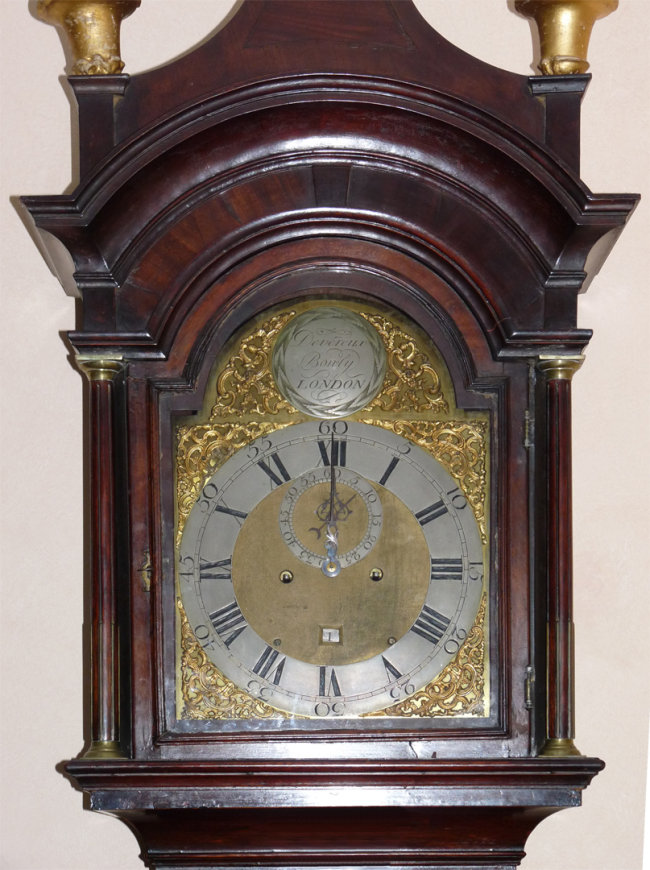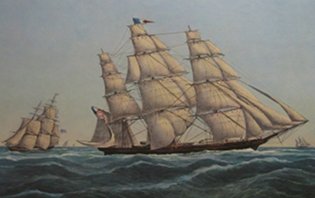
Our old English long-case clock rang 12 times on New Year's Eve, as it has for my wife's family here in New England for between 240 and 300 years. There’s a note pinned inside by her great-great grandfather that reads “This clock was buried in the basement of one of our ancestors during the Battle of Bunker Hill” (which you will recall took place on June 17, 1775). History records that the London clockmaker, Devereaux Bowly, opened his shop in 1710 and died in 1773, so the clock had to have been made between those dates. My wife’s patronymic ancestor, a sea captain, was in Boston by 1736, so he could have brought it to Massachusetts any time during that period.
Of all the furniture that the past bequeathed to the current day, most of us have a particular soft spot for the long-case, or grandfather clock (so-named after the popular 1876 song, My Grandfather’s Clock). It is still and no doubt will be for many years to come the most popular form of household timepiece. Clocks give life to a room, but the tall clocks of the peculiar form that is now 300 years old have a special dignity. To the early American colonist, owning a clock was a status symbol. Most people of that time could not afford a clock of their own and had to rely on the church clock on the town common for the time of day. Privately owned clocks were only found in the finest of homes and were certain to be displayed in a prominent place for all to view.
Long-case pendulum clocks were still a new invention in 1736. In 1580 the Astronomer Galileo observed a swinging lamp suspended by a long chain from a cathedral ceiling. He studied its swing and discovered that each swing was equal and had a natural rate of motion. He later found this rate of motion depended upon the length of the chain or pendulum. In 1640 he designed a clock mechanism incorporating the swing of a pendulum, but he died before building his clock design.
It wasn’t until 1656 that Galileo’s pendulum principle was put to use by Dutch scientist Christian Huygens, who was the first to develop a pendulum based clock. Huygens’s invention however allowed clocks to run accurately to the point of three minutes loss or gain per day. Some years later in 1670 the English clockmaker William Clement noticed that a longer pendulum kept better time, so he lengthened the pendulum to over three feet. This of course required a longer case for the clockworks, and so the long-case clock was born. From then on the clocks were variously called long-case clocks, floor clocks, and even coffin clocks because they resembled the shape and size of the simple wooden coffins of that time.
Grandfather clocks were first made for royal families and nobles, but in time their production cost were cut down to where they were affordable for merchant families and became a symbol of socio-economic status and wealth.
Around 1685, long-case clocks were imported into American colonies for the first time and roughly 10 years later their construction in the New World began. New York, New England, Pennsylvania and Virginia became long-case clock making centers, but, until the 19th century American introduction of inexpensive brass movements, English clockmakers reined supreme.
Ed. note: I'm sure most of our readers are familiar with My Grandfather's Clock:



Tracked: Jan 03, 14:58